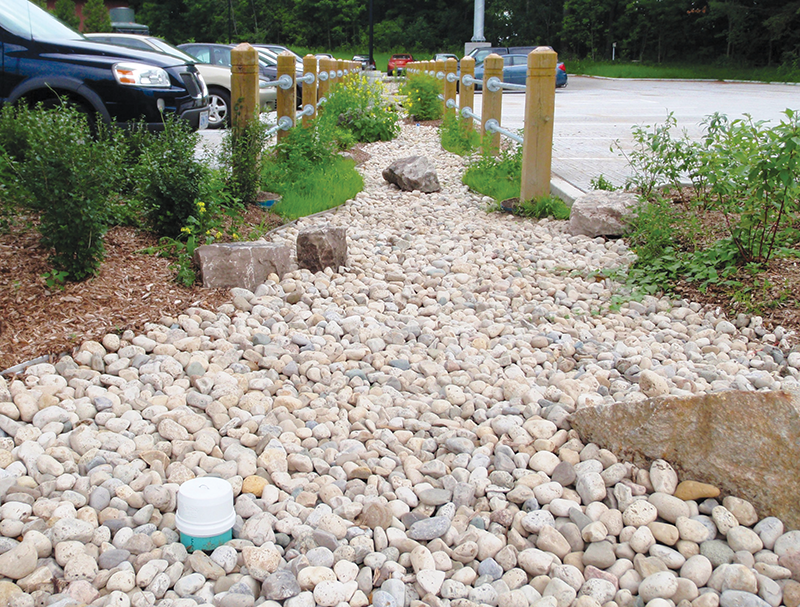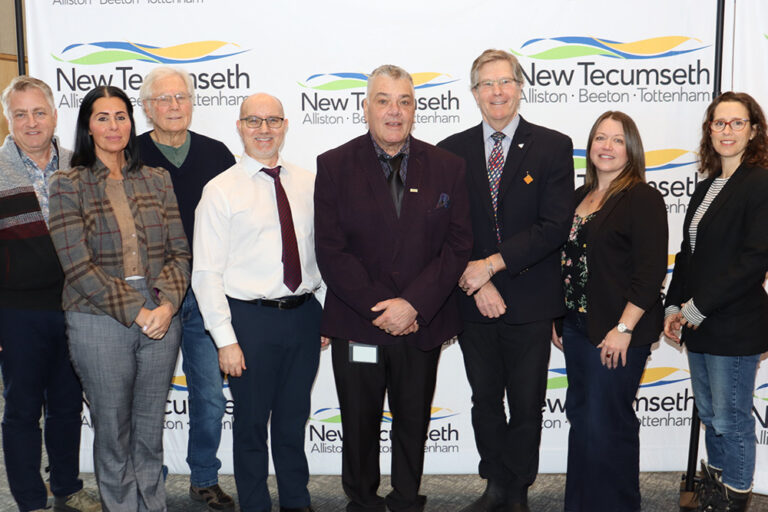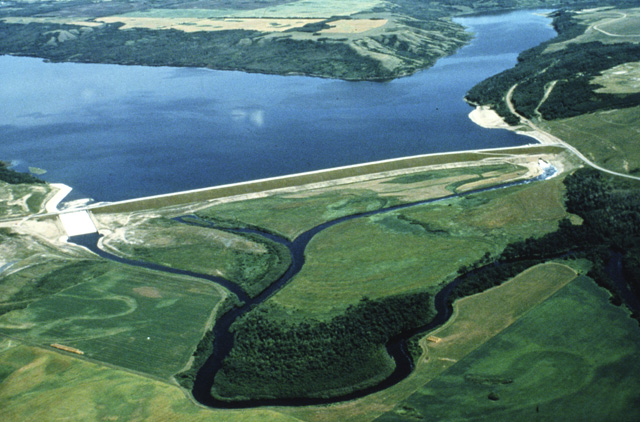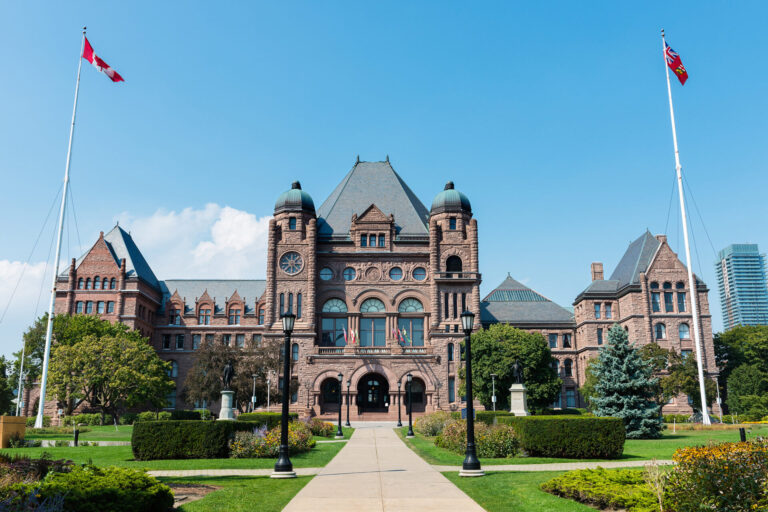Flooding is a critical issue facing Canadian municipalities that will only become more challenging as we continue to experience the effects of climate change. A 2019 Council of Canadian Academies report quotes damage to physical infrastructure caused by extreme weather as Canada’s top risk and in 2019, for the first time in history, the Bank of Canada listed climate change as one of six vulnerabilities to Canada’s financial system. Considering that extreme weather, including floods, is Canada’s primary climate change risk, stormwater and flood management is an important strategy for enhancing our climate resiliency.
Urban centres like Toronto are particularly vulnerable to flooding, and with a seasonal bombardment of news headlines warning of rising flood costs and impending infrastructure damages, this seems impossible to ignore. And rightly so—the Greater Toronto Area has seen a significant increase in flooding over the past ten years, coinciding with rising average temperatures. In 2019, the Insurance Bureau of Canada reported that insured losses from severe weather in Ontario reached $1.3 billion in 2018, after exponential increases since the early 1980s, when average insured losses were only $400 million per year for all of Canada.
There are many reasons why urban areas across Canada are seeing more flooding. Older neighbourhoods were constructed in floodplains and some regional topography shows development in low-lying areas prone to flooding, simply due to the nature of how water flows. However, three important factors are the main drivers of increased flooding in urban centres like Toronto: more precipitation as a consequence of climate change, aging and insufficient infrastructure capacity and the abundance of concrete, asphalt, and other hard surfaces.
These impermeable areas prevent water from seeping into the ground as it naturally should, forcing it to flow overland into storm sewers, many of which are old and have limited capacity. To reduce these effects, introducing permeable features like plants and soil to soak up water would help protect cities from floods—like taking a step towards re-establishing the power of the forest or wetland that once stood where our cities do now. This is natural infrastructure; the use of vegetated systems to manage stormwater and restore some of the hydrological functions of natural areas.
Why businesses should care about flooding
The need to consider the effects of climate change, including flooding, also extends to businesses. Physical damage to assets and local infrastructure, employee physical and mental wellbeing, supply chain risks, threats to water quality, and the implementation of stormwater charges can all result in unexpected costs or disruptions to business operations, both on a local and global scale. Flooding and climate change have trickle-down consequences, from a systemic, global level to the scale of the individual employee.
Here are the potential risks to businesses as a result of climate change:
Risk of physical damage
- Physical damage to a company’s assets (office buildings, warehouses, fleets, inventory, etc.).
- Damage to public infrastructure (flooded roads, impaired bridges) disrupting transportation, goods movement and accessibility.
Employee wellbeing
- Employee productivity decreases as a result of mental health concerns around residential flooding. A 2013 study by the Conference Board of Canada found that absenteeism cost the Canadian economy $16.6 billion in 2012.
- Nineteen per cent of the national population live in an area that is at risk of flooding.
Stormwater charges
- Financial costs from government implementing stormwater fees.
- Risks to the supply chain.
- Raw material availability, quality, and changes in cost, as well as labour issues and shipping/delivery disruptions.
Threats to water quality
- Contamination implications from urban flooding can affect process water sources used in manufacturing.
- Heavy metals, bacteria, chloride from road salt, oil, and grease are commonly found in rivers and lakes near urbanized areas from sources such as tire wear, industrial spills, or pavement deterioration.
- The impacts of combined sewer overflows (CSOs).
- When intense rainfall overloads the capacity of combined sewers, this mix of raw sewage and contaminated stormwater is diverted past treatment facilities, directly into surrounding rivers and lakes.
Natural infrastructure as a solution
Natural infrastructure is a valuable method of reducing stormwater runoff and lowering flood risk. It’s a strategy that incorporates natural land features in development and reintroduces these features into urban areas to allow water to infiltrate into the ground rather than run into storm sewers. Natural infrastructure can range from conserving features like wetlands to implementing permeable pavements to allow water to soak into the ground.
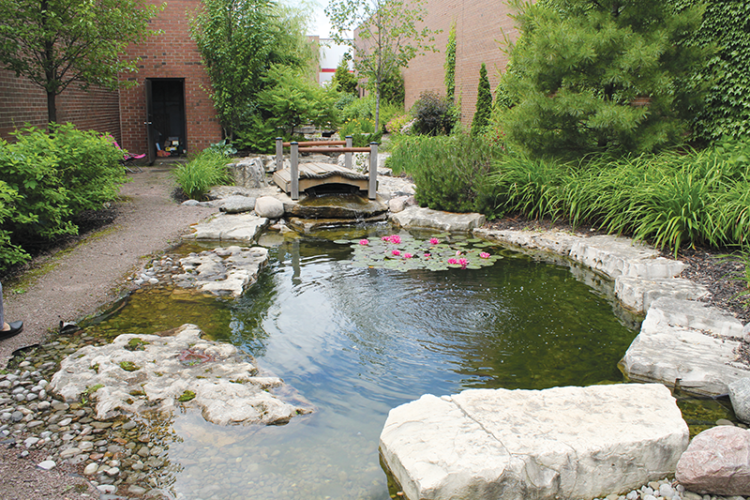
The types of natural infrastructure vary from naturally occurring landscapes to more engineered technology, which can include: wetlands; urban forests; grasslands; gardens and native landscaping (rain gardens, urban agriculture containing native species); mangrove forest restoration (coastal regions); green roofs; blue roofs; bioswales; bioretention areas; soakaways; riparian buffers; permeable pavements; and rainwater harvesting vessels.
The opportunity
The public sector has been active in promoting natural infrastructure on public lands, but even so, a large percentage of the land in a given municipality is privately owned. The prevalence of private land, particularly industrial and commercially owned, has led experts in the field to stress the importance of private sector involvement in natural infrastructure propagation; however, this has generally been difficult to achieve. A lack of understanding in the business sector as to the causes of urban flooding, and minimal awareness of natural infrastructure as a solution, have, up until now, been limiting factors on the predominance of natural infrastructure on corporate lands.
The private sector is, therefore, a key stakeholder in addressing the issue of flooding and climate vulnerability in urban areas, and despite its lack of prevalence, there are a host of benefits businesses can reap from on-site implementation of natural infrastructure. Not only can natural infrastructure lower flood risk and improve water runoff quality, it has been shown to provide building energy savings, increase property values, and can be used to gain municipal stormwater charge credits. From another perspective, this also presents the private sector with the opportunity to take a leadership role in creating resiliency in their communities and demonstrate corporate social responsibility to consumers, employees, and investors. In fact, climate resiliency is becoming an increasingly important metric of environmental, social, and governance (ESG) criteria used by investors to evaluate businesses.
The path toward natural infrastructure adoption
Partners in Project Green (PPG), a program of Toronto and Region Conservation Authority, is in the unique position of convening municipalities, the not-for-profit sector, and the business community to identify and implement sustainability solutions.
PPG’s Water Stewardship performance area seeks to promote best practices in stormwater management and flood resiliency, and has supported multiple successful implementations of natural infrastructure projects on corporate properties, mitigating the permeable surfaces in the Pearson Eco-Business Zone.
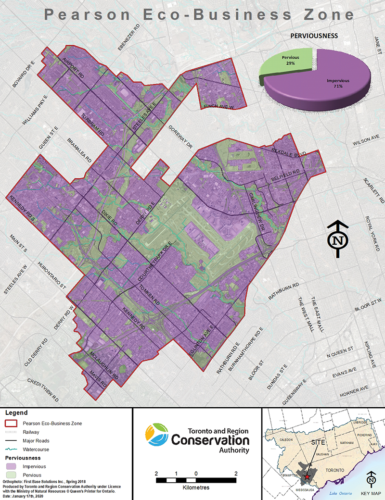
Working as a liaison between the conservation community and the private sector presents a unique opportunity to provide information for businesses on flooding issues in the GTA, on the multiple benefits of natural infrastructure, and to support the business case for companies to act. This will improve climate change resiliency not only for the participating company but the surrounding community as well. The recent publication of PPG’s white paper entitled: The Business Case for Natural Infrastructure: How corporations can invest in nature for climate resilience seeks to utilize this strategic position to assist businesses achieve both economic and environmental resiliency.
A well-functioning environment works as a system, with trees, soil, rivers, valleys, and peaks, each playing a role in the water cycle. A well-functioning urban water cycle must also have multiple collaborators, each playing their part. In order to address the issue of flooding in the GTA, the private sector must play a role in, and benefit from, the solution. Natural infrastructure is a simple way of growing businesses into attractive, marketable, and environmentally and socially responsible organizations, resilient to the effects of climate change and prepared for the future.
This article was written by Alyssa Kelly, the primary author of The Business Case for Natural Infrastructure: How corporations can invest in nature for climate resilience, and Eric Meliton, a program manager of Partners in Project Green (a program run by the Toronto and Region Conservation Authority). It appeared in the November/December 2020 issue of Water Canada.
Header Image Credit: Toronto and Region Conservation Authority (TRCA)

